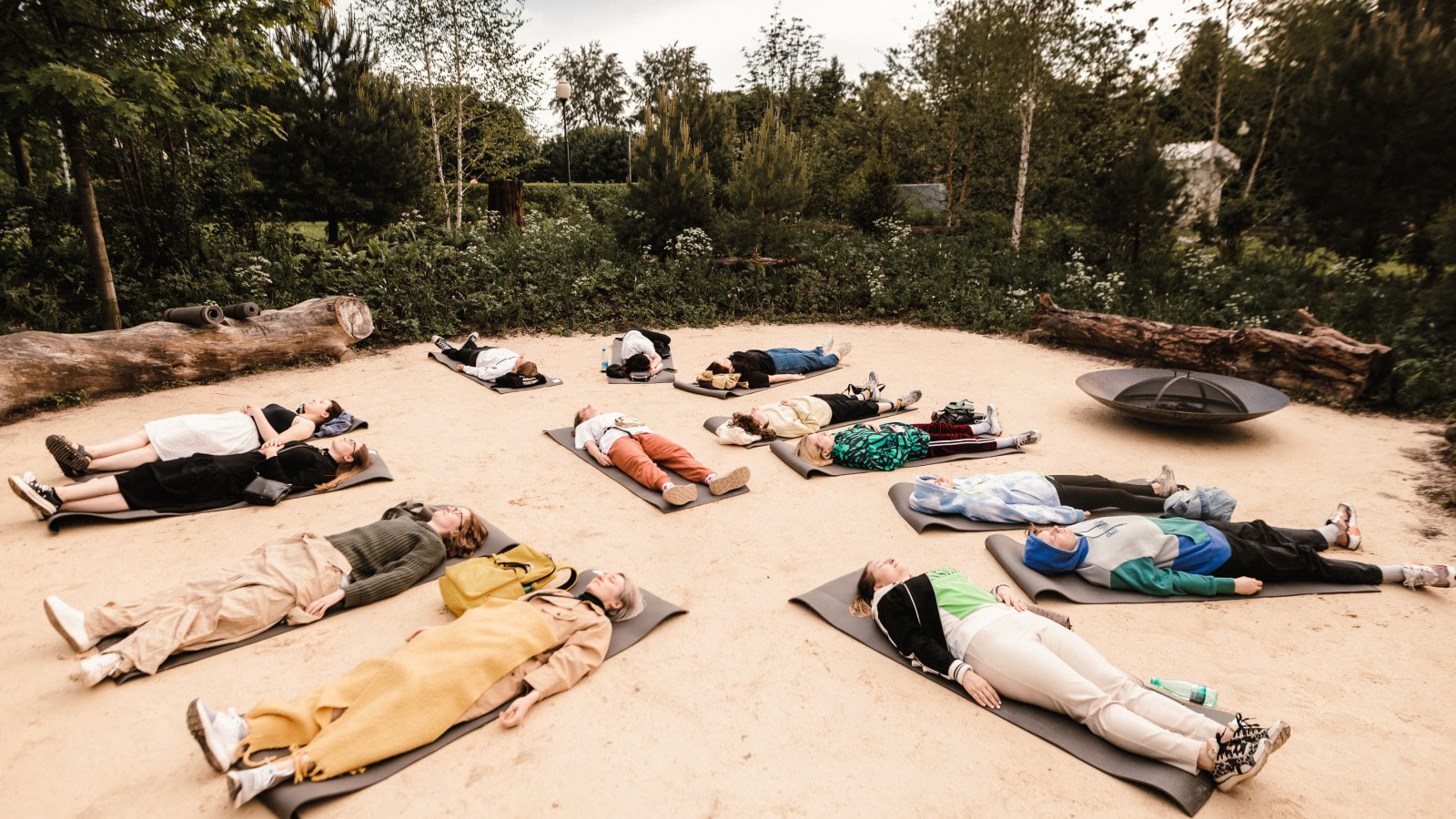Dasha Sablina’s Diary
Before the project, my understanding of silence was relatively unambiguous. Generally, I never really thought about the meaning of this word. By default, silence was simply the absence of noise for me.
After four months of mediation at Silence, this word simultaneously acquired an abundance of meanings for me—and lost its original meaning altogether. After talking with many visitors and learning their answers to the question, “What is silence for you, for each of you?” I got lost in my own reflections upon what silence means for me.
For some, silence is not the absence of sound and tranquility, but on the contrary, a constant monotonous noise, for example, the sounds of a fridge or the noise of the city and a crowd of people merging into the background. The way we perceive the meaning of this word is very individual. While silence can bring peace for some of us, for others, silence is anxiety and tension.
The mediation session that took place on August 26 was one of the most memorable. At that time, there was already a sculpture installed on the site. It was a rainy day, and there were hardly any visitors. At some point, a woman with her little grandson entered the garden. The woman approached the sculpture, and afterward, for the first time in her presence, I did not hear from a visitor that the sculpture looked repulsive and frightening. We started a dialogue, and she said that the fastenings holding the parts of the figure together remind her of syringe marks, while the sculpture itself is the personification of the influence of harmful substances on our body and soul. Despite its sore sight, however, the sculpture's face reflects a smile and serenity, which leads us to the conclusion that under alcohol or drug intoxication, people do not realize the destructiveness of their behavior. They are in the dark—and this is the state of silence for them, which is actually deceiving.
One of my important observations was the transformation of the space of Silence. I do not mean visible changes, though, but about the very experience of being in the garden. The longer I worked on the project, the more noticeable these changes were. Every person who entered the space, every meditation practice in there—everything left its emotional and energetic trace, which formed a powerful aura inside the garden toward the end of the project.
For the first few weeks, the sensations from being in the garden were no different from those of a visiting park or a museum, but over time I began to notice that when I entered the space, I was sort of swept over by a wave of completely different energy. I still cannot explain what that feeling was. It did not affect my mood, did not invoke certain emotions. I just felt something alternative, completely different from my everyday state. A large number of meditation practices, during which the participants fully surrender to the process—let go of old memories and traumas, acquire new impressions, dig into themselves, open up from a new side for themselves—significantly influenced the energy inside the space.
In the last month of Silence, this difference became so apparent to me that I began to perceive the garden, first of all, as some kind of dome filled with energy, and only secondly as a physical object. Perhaps silence for me is precisely that incomprehensible state that I entered in the installation space, and I am very grateful to the project for the opportunity to reflect on such things.
